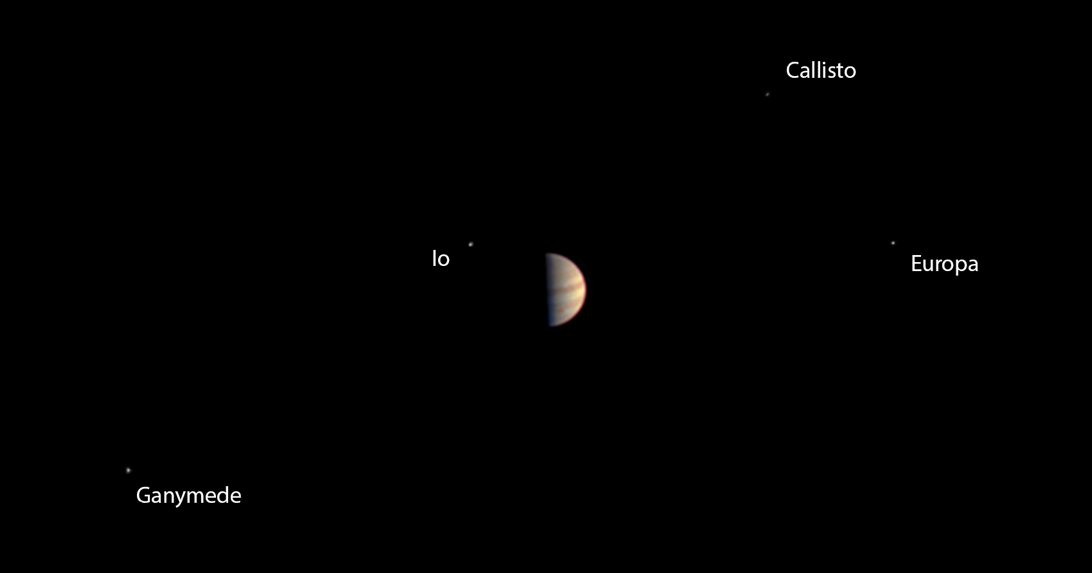
NASA rang in July Fourth with a huge sigh of relief as the Juno spacecraft successfully entered orbit around Jupiter Monday night. The organization's scientists and engineers watched as the spacecraft carried out the maneuver, dubbed Jupiter Orbit Insertion, while many Americans gathered to watch fireworks around the country.
"Independence Day always is something to celebrate, but today we can add to America's birthday another reason to cheer—Juno is at Jupiter," NASA administrator Charles Bolden said in a press release. "And what is more American than a NASA mission going boldly where no spacecraft has gone before? With Juno, we will investigate the unknowns of Jupiter's massive radiation belts to delve deep into not only the planet's interior but into how Jupiter was born and how our entire solar system evolved."
The NASA team received confirmation of success just a few minutes before midnight Eastern time after a 35-minute engine burn that slowed Juno down and allowed it to go into orbit around the largest planet in the solar system.
The Juno team shut off the spacecraft's science instruments for the orbit insertion and won't turn them back on for a couple of days. But while space enthusiasts wait for data and images to start pouring out—Juno's principal investigator, Scott Bolton, said all images shot by the "Juno Cam" will be released to the public—NASA has published a time-lapse video of the Galilean moons orbiting around Jupiter.
The movements of Jupiter's four largest moons—Io, Europa, Ganymede and Callisto—were captured from June 12 to 29 as Juno traveled closer and closer toward Jupiter, starting when the spacecraft was 10 million miles away until it was 3 million miles away. Galileo Galilei observed these moons in the early 17th century.
"I'd like to think that Galileo would have really liked that movie," Bolton said of the video at a post-Jupiter Orbit Insertion briefing on Monday night. The time lapse spans "17 days and you watched it in three minutes, which I think is more enjoyable."
The video also shows that Callisto, the outermost of the moons, is dimmer than the others, Bolton said. Scientists did not previously know this was the case and don't know why—another question they'll have to try to answer as Juno continues its exploration of Jupiter.
In many ways, the Juno mission is a groundbreaking one for NASA: It's the first solar-powered mission to the outer planets and the first spacecraft to orbit an outer planet from pole to pole. The time-lapse video also represents a first. "In all of history, we've never really been able to see the motion of any heavenly body against another," Bolton said. We're "finally able to see with real video, real pictures, this motion, and we've only been able to imagine it until today."
The spacecraft is following an elliptical orbit, getting as close as 2,600 miles from Jupiter's cloud tops, then moving farther away repeatedly over the next year and a half. Asked at the briefing if NASA would make another video after Juno makes its first close approach to Jupiter in late August, or after another close approach, Bolton's face looked like someone had ruined an elaborately planned surprise. "That's the plan," he managed to say.
Uncommon Knowledge
Newsweek is committed to challenging conventional wisdom and finding connections in the search for common ground.
Newsweek is committed to challenging conventional wisdom and finding connections in the search for common ground.
About the writer
Stav is a general assignment staff writer for Newsweek. She received the Newswomen's Club of New York's 2016 Martha Coman Front ... Read more
To read how Newsweek uses AI as a newsroom tool, Click here.








